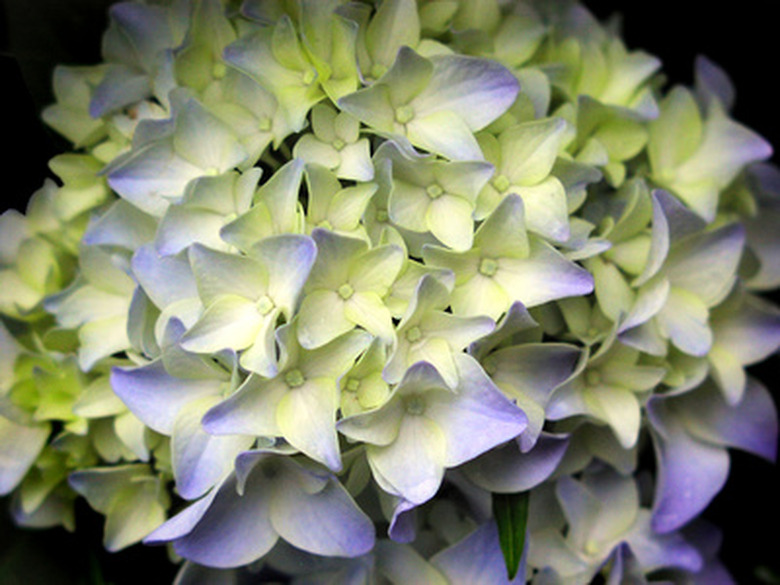Hydrangeas & Pests
Known for their cloud-like clusters of pink, purple, white or blue flowers, the hydrangea is gaining popularity among today's gardeners. Hydrangea is a hardy, easy-to-grow shrub that has a long life span. They prefer partial shade with some sun and like to be kept moist. Although the hydrangea is a healthy plant and has few enemies or ailments, there are garden pests that can cause problems for your hydrangea plant.
Aphids
Often called plant lice, aphids will cause damage to your hydrangea by sucking plant juices from the stems, leaves and buds. They may also transmit viruses while feeding on your plant. Aphids leave a sticky waste product called honeydew on the leaves of plants. If left unattended, honeydew allows black fungus to grow on leaves. Rid plants of aphids by using insecticidal soaps.
- Known for their cloud-like clusters of pink, purple, white or blue flowers, the hydrangea is gaining popularity among today's gardeners.
- Often called plant lice, aphids will cause damage to your hydrangea by sucking plant juices from the stems, leaves and buds.
Rose Chafers
Rose chafers are beetles that feed on the blossoms of the hydrangea, causing small holes to appear on the petals. They will also eat the leaves, causing damage to the tissue between the veins, an injury that is called skeletonizing. Monitor your garden for these beetles starting in late May. Manual removal of chafers is possible but challenging if there are a lot of them on your plant. Insecticides are the best way to rid your plant of these pests.
Spider Mites
Hydrangea are susceptible to the two-spotted and red spider mite. They are small and difficult to see with the naked eye. Colors range from reds, browns, greens and yellows. They produce a webbing that will protect them and their eggs from any natural enemies that could help control them. Water helps remove the mites, so hose plants with water in the garden or sink if possible. For larger plants, wipe leaves with a damp cloth to remove webbing and mites. Few chemicals are effective against spider mights; you may find insecticidal soaps work if used on a weekly basis.
- Rose chafers are beetles that feed on the blossoms of the hydrangea, causing small holes to appear on the petals.
- Monitor your garden for these beetles starting in late May.
- Manual removal of chafers is possible but challenging if there are a lot of them on your plant.
Snails and Slugs
These mollusks are fans of the hydrangea plant. They will eat the leaves and tender new plant shoots and can do a large amount of damage to your plant. Both slugs and snails are nocturnal creatures and feed during evening hours or during days when it's cloudy and darker. Slugs and snails live under decaying boards, logs and in damp areas of a garden. Eliminating plant rubbish, boxes and other materials where they can lay their eggs will help keep them out of your garden. Hand removal of slugs and snails is quite effective. You may use chemical baits for traps if invasion is excessive.
- These mollusks are fans of the hydrangea plant.
- Eliminating plant rubbish, boxes and other materials where they can lay their eggs will help keep them out of your garden.
Thrip
Thrip are tiny insects that will suck the juice from stalks, leaves and the flower of your hydrangea. They are active in daylight and evening hours and are often called thunder flies. Signs of thrip damage are tiny black specks that dot the leaves of your flower; this is the waste product of the thrip. Leaves may take on a silvery sheen after some time. Control thrip by applying a dust that contains chlordan or dieldrin.
